Scottish economic bulletin: May 2024
Provides a summary of latest key economic statistics, forecasts and analysis on the Scottish economy.
Consumer Activity
Consumer sentiment improved in each of the first three months of 2024, but remains negative overall.
Consumer Sentiment
- The Scottish Consumer Sentiment Indicator reflects how households think the economy is performing, how secure they feel about their household finances and how relaxed they feel about spending money.
- Consumer sentiment fell sharply during 2022 to -29.4 as inflationary pressures increased and the economic outlook weakened. However, sentiment strengthened significantly over 2023 as inflationary pressures reduced and latest data for March show sentiment increased by 0.4 points over the month and by 7.9 points over the year to -5.7.[13]
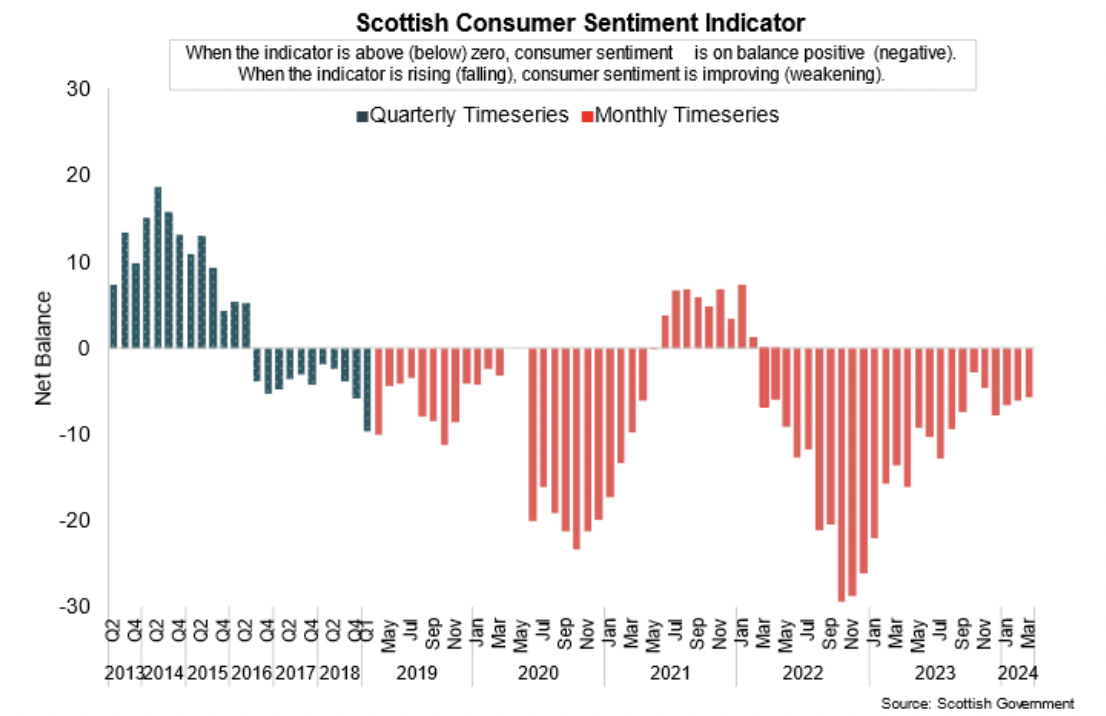
- While four of the five sentiment sub-indicators have strengthened over the past year, households continue to report in March that, on balance, their personal financial secuity is weaker (-10.9) and are more cautious about spending money (-20.1) than at the same time last year. Despite this, households marginally believe that the economy is currently performing better now than in the last twelve months (0.2).
- Looking ahead to the coming year, households expect the economy to improve (5.8), although also continue to expect their personal financial security to weaken (-3.5).
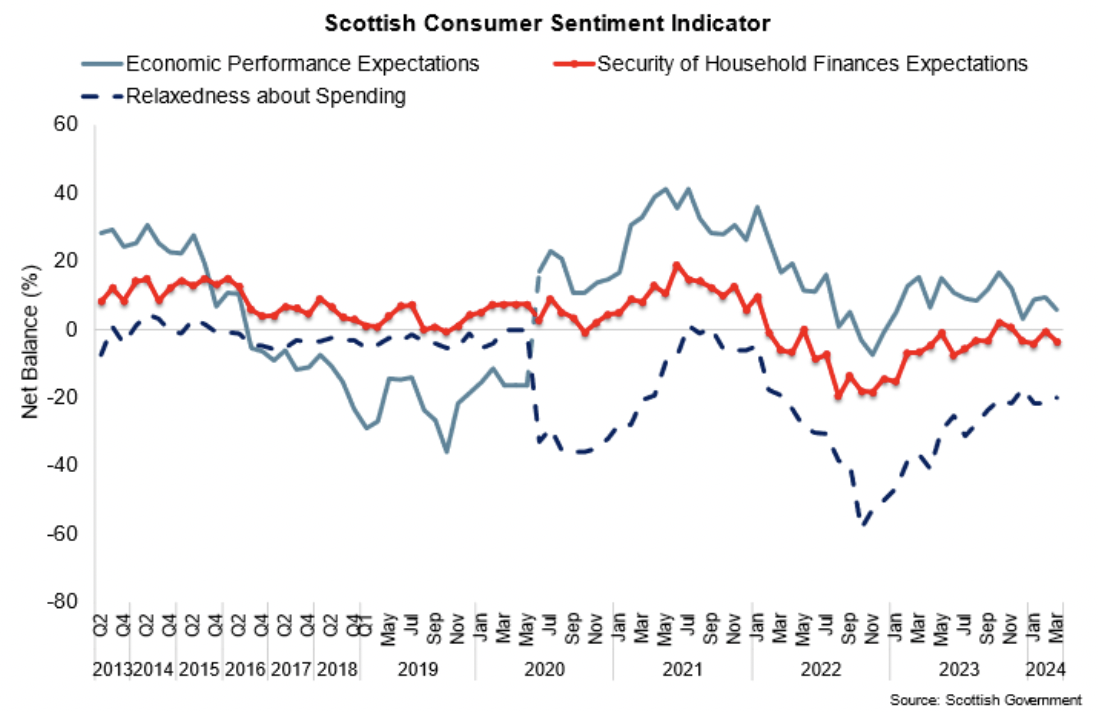
- However, consumer sentiment in the first quarter of 2024 has fallen relative to the fourth quarter of 2023, with the the composite Consumer Sentiment Index falling by 1.1 points to -6.2 points, reflecting weaker consumer confidence since the start of the new year.
Cost of Living and Spending
- The rate of inflation has reduced significantly over the past year, however the sharp rise in cost of living and higher interest rates continues to impact household decisions on spending (essential and non-essential), saving, and borrowing (including financing outstanding borrowing).
- For example, retail sales volumes in Great Britain have remained settled below their 2019 level over the past year, growing 0.8% over the year to March while sales value grew 3.3%; the divergence reflecting the pace of rising prices.[14]
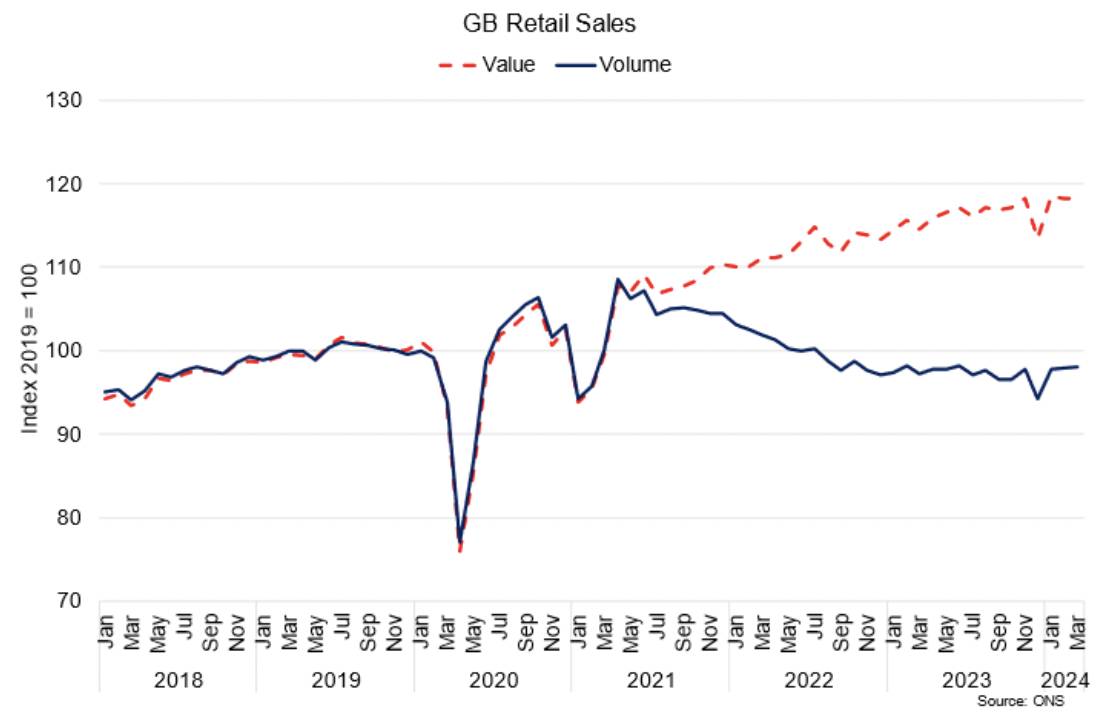
- Similarly the change in prices and interest rates have had a significant impact on the amount UK conumers are paying for their energy costs, mortgages and other loans. In February the average monthly direct debit payment for electricity and gas was £186.48, down 5.1% compared to February 2023 however was up 35% compared to February 2022. This in part reflects that the Energy Price Cap has fallen over the past year, however remains significantly higher compared to two years ago.[15]

- However, the average monthly direct debit payment for mortgages was £910.76 in February (up 10.8% over the year and 24.5% since the start of 2022) and £253.51 for loans (up 4.3% over the year and 26.7% since 2022). This in part reflects that higher interest rates are continuing to progressively feed through to higher borrowing costs.
- The sharp increase in prices has been accompanied by an increase in the direct debit failure rate (the percentage of transactions that fail due to insufficient funds), reflecting the challenges facing some household budgets. For electricity and gas payments, the payment failure rate has risen to 1.31% (up from 1.06% in February 2023), while for mortgages it has risen to 0.51% (up from 0.41% in February 2023).

- More broadly in April, the ONS Public Opinions and Social Trends survey showed that 34% of respondents were finding it very or somewhat difficult affording energy bill payments while 40% of respondents said the same for mortgage and rent payments. For energy bills, this was lower than at the same point in 2023 (47%), however this is up slightly for mortgage and rent payments (35%).[16]
- The more gradual and persistent impacts of higher interest rates on mortgage payment challenges compared to energy payments reflects the sharp rise in the Bank Rate between the end of 2021 and middle of 2023 and the time it takes for the full impact of the increases to be felt at an aggregate level due to the high share of mortgages that are on a fixed rate.
- Reflecting this, the ‘effective’ interest rate – the actual interest paid – on newly drawn mortgages remains elevated but fell for a fourth consecutive month in March to 4.73%, in part reflecting increased market expectations that interest rates may reduce in 2024. Rates on the outstanding stock of mortgages however continued to rise to 3.5%.[17]
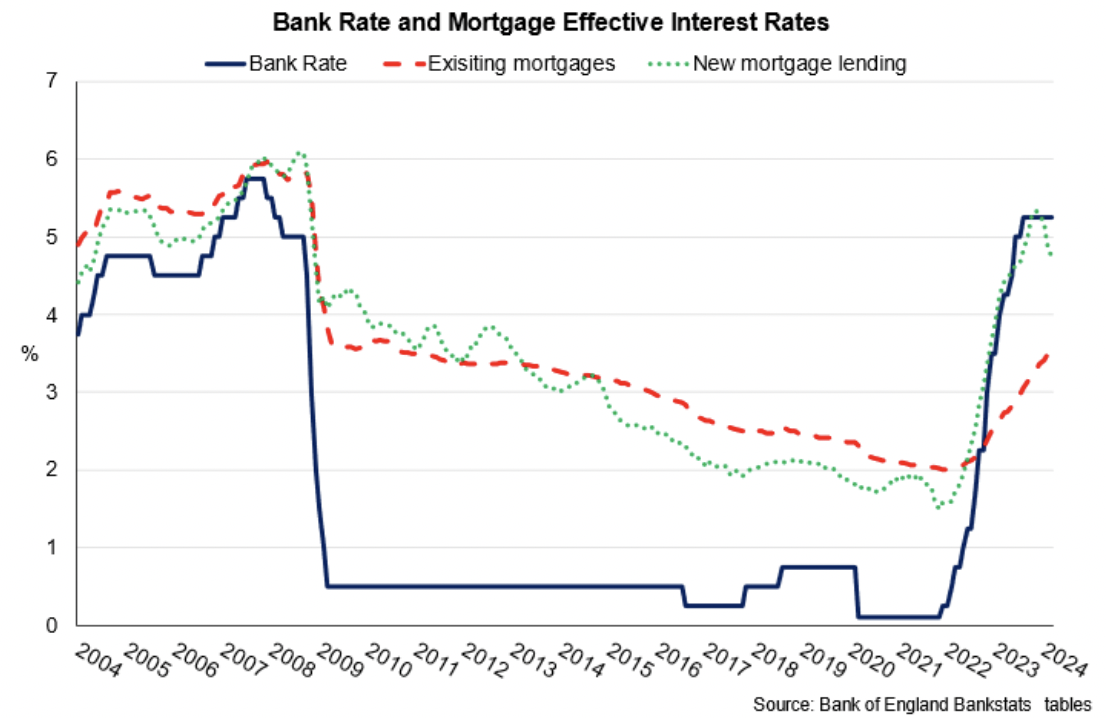
- In response to the change in cost pressures facing households, ONS Public Opinions and Social Trends survey data from March show that the most common actions people are taking in response to the increased cost of living were spending less on non-essentials (61%) and shopping around more (49%). Furthermore, 41% reported using less fuel such as gas or electricity in their home and 37% reported spending less on food shopping and essentials.
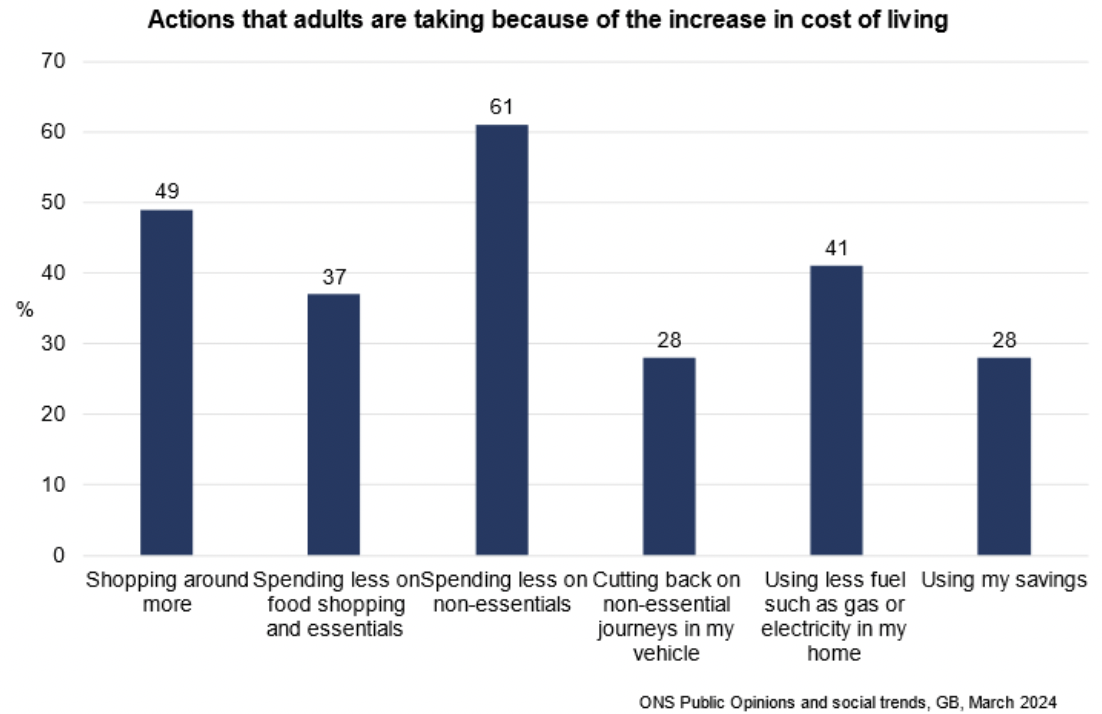
Contact
Email: OCEABusiness@gov.scot
There is a problem
Thanks for your feedback